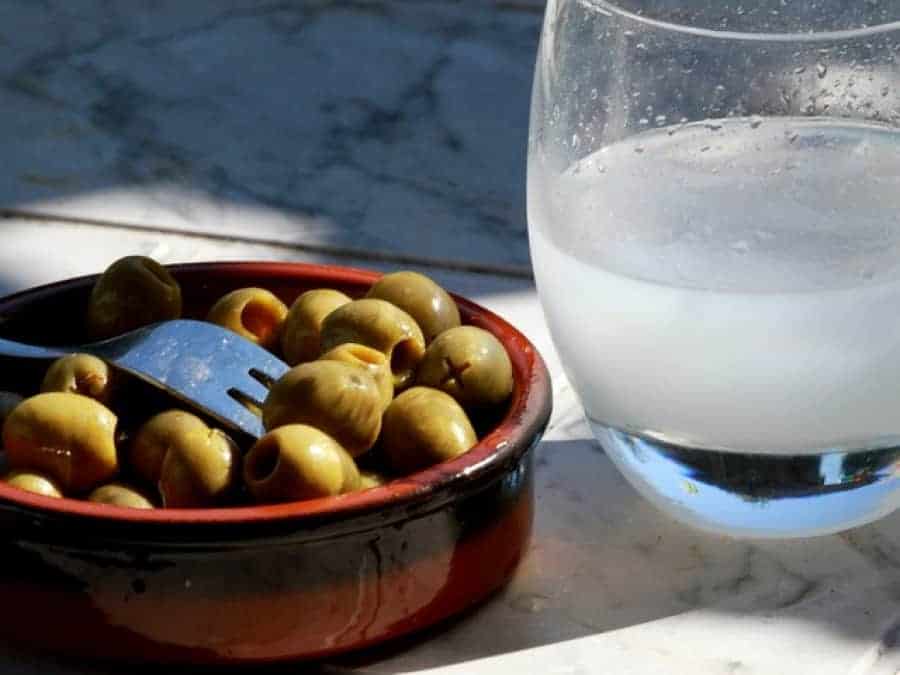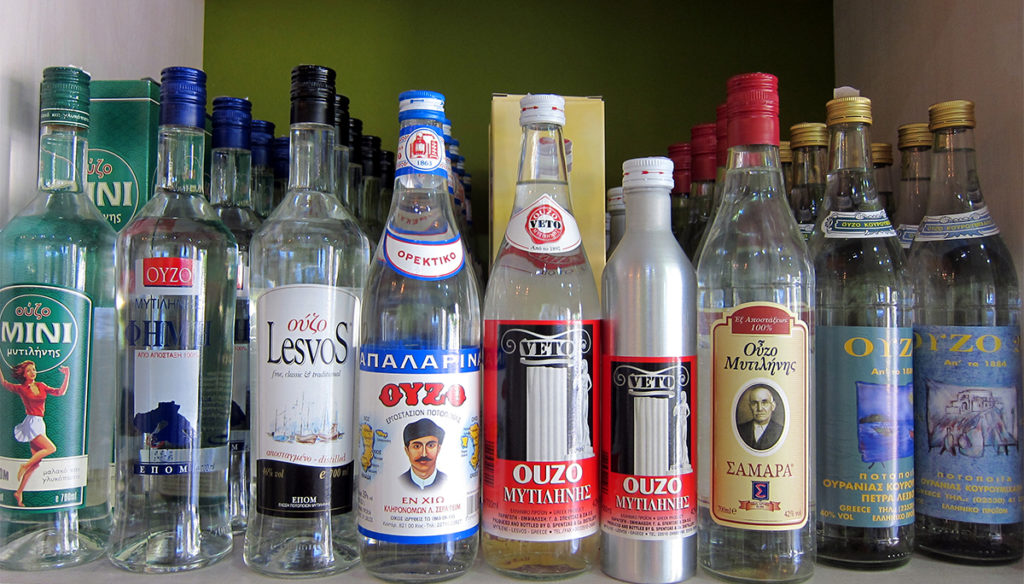
There is an old Greek saying “Ouzo makes the spirit” and in true Greek style, it’s paired with food, music and lively conversation. A glass of Ouzo is the perfect companion to all of the above and there’s no doubt it helps create ‘Kefi’ (joy).
Some say drinking Ouzo is a form of art, while others call it a lifestyle. Today we put the spotlight on Greece’s most famous beverage.

Ouzo is an anise-flavoured aperitif consumed by people of all ages, mostly while sitting around with family and friends at a tavern, kafenio or Ouzeria.
Made from the by-products of grapes after they’ve been used for wine-making (mainly the skins and stems), it’s then distilled into a high-proof alcoholic beverage that’s flavoured primarily with anise, which gives it a distinctive licorice taste. Other herbs and spices are added to enhance the flavour, and each manufacturer usually keeps their recipe a closely guarded secret. Both the quality of the distillation process and the flavourings make each brand of Ouzo very different in taste.
Enjoying this drink is a cultural ritual in Greece, however there are many do’s and don’ts when it comes to drinking Greece’s most popular beverage.

Firstly, Ouzo is not meant to be placed in the fridge but rather you should add one or two ice cubes in a glass, or cold water, to make it cooler. Secondly, Ouzo is not designed to be consumed on an empty stomach, it’s best accompanied by mezedakia including olives, Feta cheese, anchovies, octopus, bread, sardines and other light dishes.

Ouzo is said to have its roots in Tsipouro, which is dated back to a group of 14th century monks living in a monastery on Mount Athos. Modern Ouzo distillation largely took off in the beginning of the 19th century, following Greek independence, with production centred on the island of Lesvos. In 1932, Ouzo producers developed a method of distillation using copper stills that is now the standard method of production.
In 2006 the Greek government gained exclusive rights to the name, and nowadays, if it’s not made in Greece, it can’t be called Ouzo.
It's also very versatile and included in many signature Greek dishes. Mostly in seafood recipes, as well as in desserts because it gives that unique anise taste.

Ouzo is also used for medicinal purposes, with many wiping it on to wounds as a form of antiseptic. Head colds and flus are also said to be treated with a warm Ouzo drink before falling sleep. And let’s not forget Yiayia’s remedy of using Ouzo on babies who are teething, and gargling it for sore throats, or mouth ulcers. According to many, you can also rub your tight muscles or joints with Ouzo, or wipe it across your stomach to relieve cramping.
Did you also know, Ouzo is a clear spirit that is transformed when iced water or cubes are added. When first poured into a glass, Ouzo looks like water. However, when cubes are added, it becomes cloudy.
Ouzo is mostly consumed over Summer and Greeks will pine over one glass for hours as they sit back, relax, talk, and eat. It is not a drink that is meant to be rushed. Remember to enjoy each sip, and make sure you also order lots of mezedakia along with it. This is the way to enjoy the true meaning of a Greek spirit!
